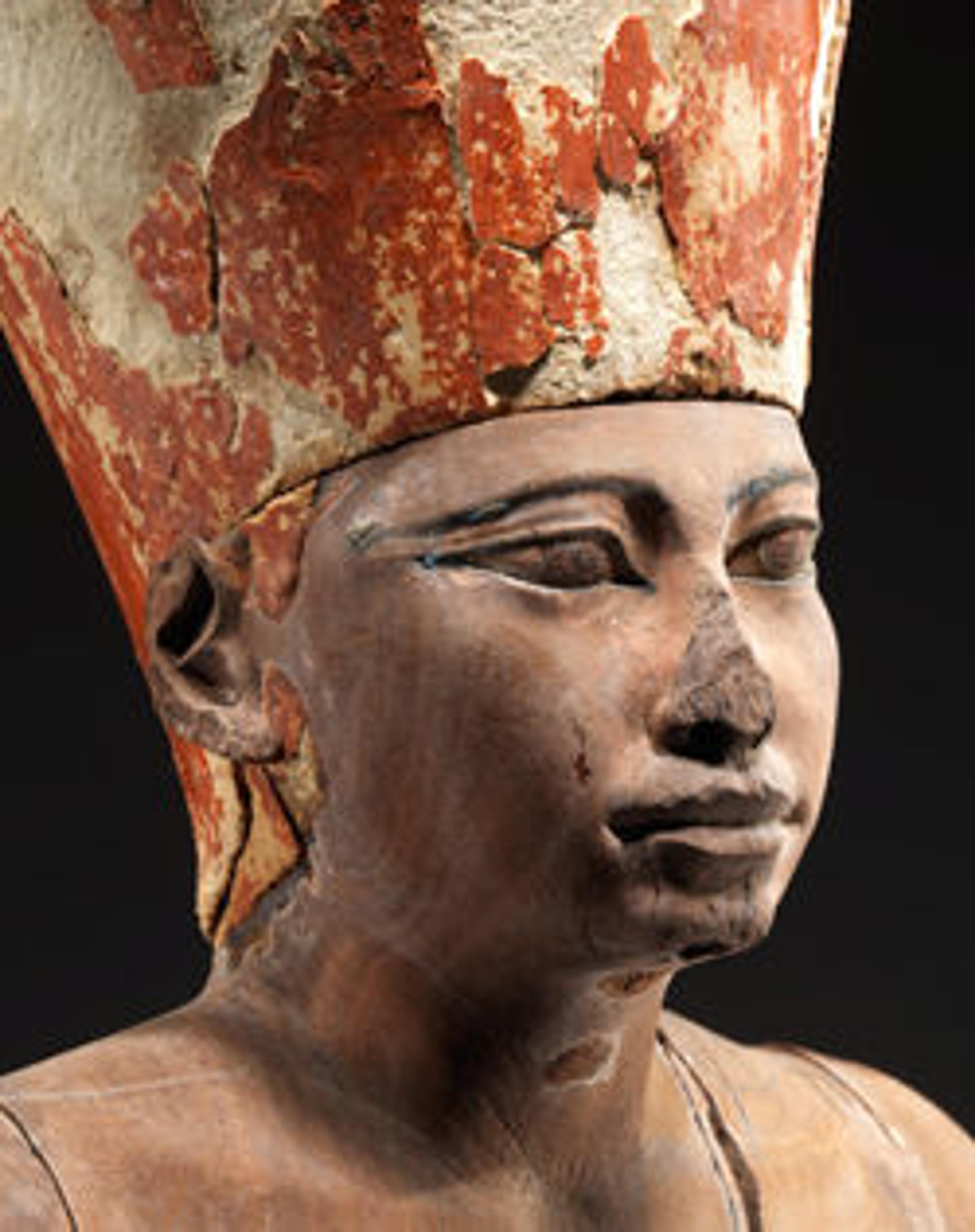Flail of Hapiankhtifi
One of the complete burial groups excavated at Meir belonged to the Steward Hapiankhtifi. When the mummy was unwrapped in the Museum numerous objects were discovered: a model dagger and sheath, two mirrors, a bat amulet and jewelry. A ceremonial flail, an emblem of Osiris with whom the deceased wanted to be identified, was found broken and scattered throughout the coffin. The flail has a wooden handle tipped with gold leaf at either end and three pendants. The long end pendants are connected to the handle by three long cylindrical blue faience beads with two carnelian and one green faience bead toward the handle and two carnelian and two green faience beads toward the pendants.
Artwork Details
- Title: Flail of Hapiankhtifi
- Period: Middle Kingdom
- Dynasty: Dynasty 12
- Date: ca. 1981–1802 B.C.
- Geography: From Egypt, Middle Egypt, Meir, Tomb of Hapiankhtifi, Mummy, Khashaba excavations, 1910–12
- Medium: Wood, gold leaf, carnelian, faience
- Dimensions: L. 52.8 cm (20 13/16 in.)
- Credit Line: Gift of J. Pierpont Morgan, 1912
- Object Number: 12.183.15a–g
- Curatorial Department: Egyptian Art
More Artwork
Research Resources
The Met provides unparalleled resources for research and welcomes an international community of students and scholars. The Met's Open Access API is where creators and researchers can connect to the The Met collection. Open Access data and public domain images are available for unrestricted commercial and noncommercial use without permission or fee.
To request images under copyright and other restrictions, please use this Image Request form.
Feedback
We continue to research and examine historical and cultural context for objects in The Met collection. If you have comments or questions about this object record, please contact us using the form below. The Museum looks forward to receiving your comments.
